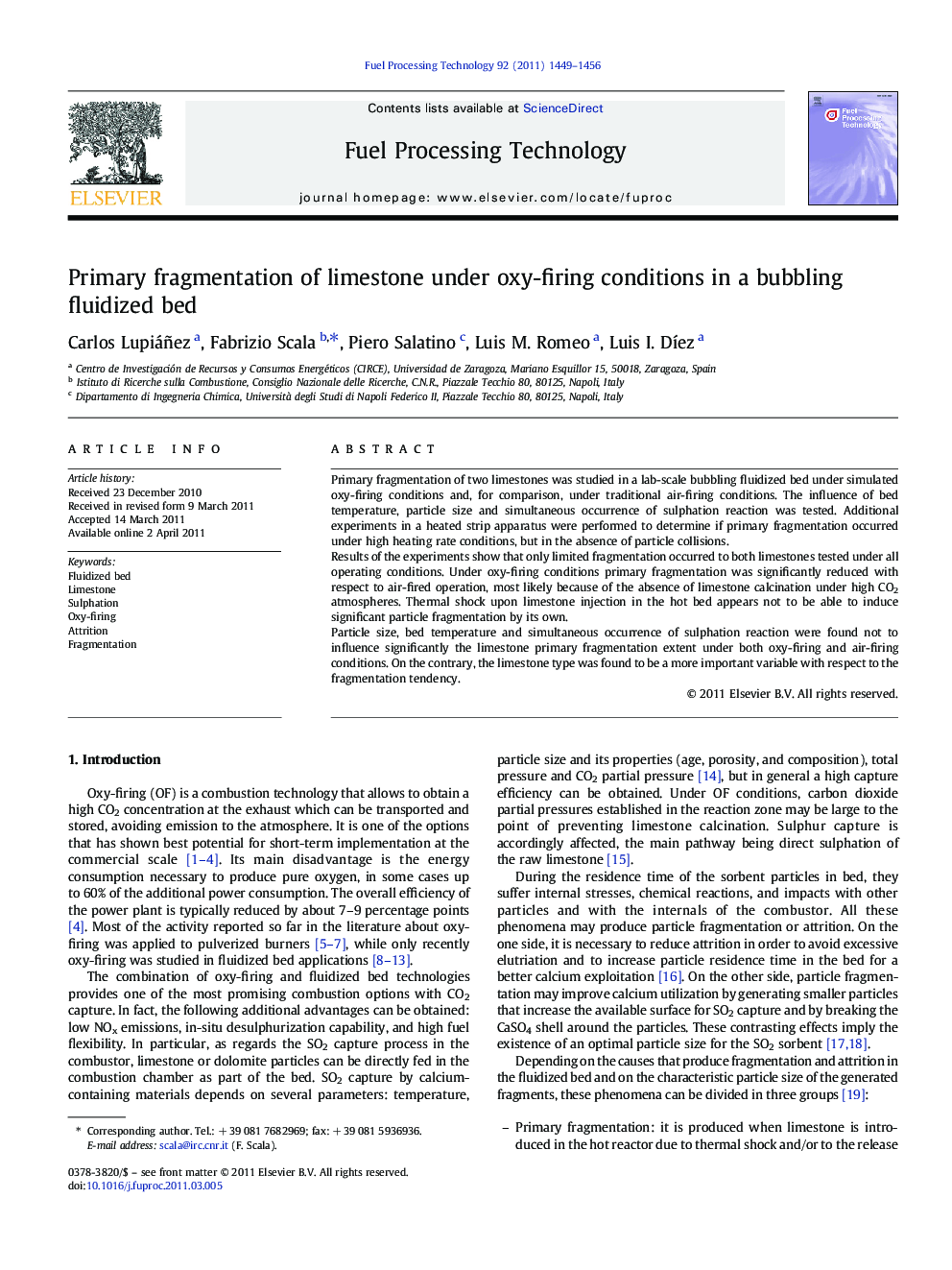| Article ID | Journal | Published Year | Pages | File Type |
|---|---|---|---|---|
| 210781 | Fuel Processing Technology | 2011 | 8 Pages |
Primary fragmentation of two limestones was studied in a lab-scale bubbling fluidized bed under simulated oxy-firing conditions and, for comparison, under traditional air-firing conditions. The influence of bed temperature, particle size and simultaneous occurrence of sulphation reaction was tested. Additional experiments in a heated strip apparatus were performed to determine if primary fragmentation occurred under high heating rate conditions, but in the absence of particle collisions.Results of the experiments show that only limited fragmentation occurred to both limestones tested under all operating conditions. Under oxy-firing conditions primary fragmentation was significantly reduced with respect to air-fired operation, most likely because of the absence of limestone calcination under high CO2 atmospheres. Thermal shock upon limestone injection in the hot bed appears not to be able to induce significant particle fragmentation by its own.Particle size, bed temperature and simultaneous occurrence of sulphation reaction were found not to influence significantly the limestone primary fragmentation extent under both oxy-firing and air-firing conditions. On the contrary, the limestone type was found to be a more important variable with respect to the fragmentation tendency.
Research Highlights► Limestone primary fragmentation during fluidized bed oxy-firing. ► Influence of temperature, particle size and sulphation reaction. ► During oxy-firing primary fragmentation is reduced with respect to air-firing. ► The absence of limestone calcination is the key reason. ► Limestone type is an important variable for fragmentation.
